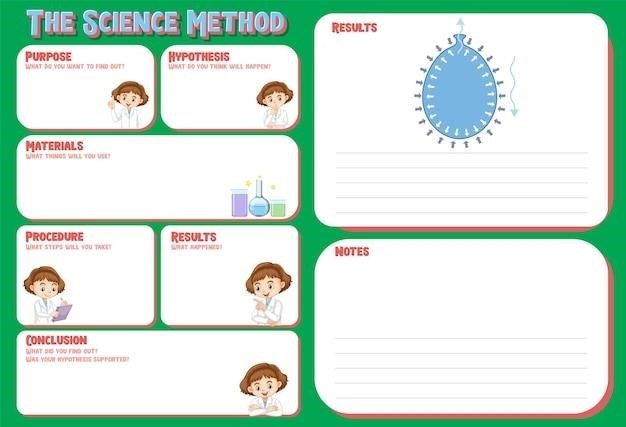Mosby’s Textbook for Nursing Assistants, 10th Edition⁚ A Comprehensive Guide
Mosby’s Textbook for Nursing Assistants, 10th Edition, is a comprehensive guide for aspiring nursing assistants. It covers a wide range of topics, including patient care, safety, and legal issues. The book is known for its readability, visual presentation, and step-by-step instructions for over 100 procedures.
Introduction
Mosby’s Textbook for Nursing Assistants, 10th Edition, is a widely-used resource for individuals seeking to enter the field of nursing assistance. This comprehensive textbook provides a thorough foundation in the knowledge and skills required for providing quality patient care in various healthcare settings. The 10th edition, published by Mosby in 2020, encompasses a wealth of information, presented in a clear and engaging manner, making it an invaluable tool for both students and practicing nursing assistants. Its emphasis on practical application and real-world scenarios ensures that readers are well-prepared for the demands of their chosen profession.
Key Features and Benefits
Mosby’s Textbook for Nursing Assistants, 10th Edition, is packed with features designed to enhance learning and prepare students for success. The book boasts a comprehensive scope, covering a broad range of topics from basic patient care to more specialized procedures. Its emphasis on readability and visual presentation makes complex information accessible and engaging. Each chapter includes a practice scenario, providing students with valuable opportunities to apply their knowledge and develop critical thinking skills. The text’s lifespan coverage, including skills for adults, older residents, maternity, and pediatric patients, makes it a versatile resource for a variety of healthcare settings.
Content Coverage
Mosby’s Textbook for Nursing Assistants, 10th Edition, covers a wide range of topics essential for nursing assistant training and practice. The book delves into foundational areas like healthcare agencies, patient rights, and basic nursing skills. It provides detailed instructions for over 100 procedures, ensuring students are equipped to handle common tasks in various healthcare settings. Key areas of content include⁚
- Patient care fundamentals
- Communication and interpersonal skills
- Safety and infection control
- Legal and ethical considerations
- Documentation and reporting
- Lifespan care, including pediatrics, maternity, and geriatrics
- Specialized skills, such as wound care, medication administration, and vital sign monitoring
This comprehensive coverage ensures students are well-prepared to work in long-term care, acute care, and subacute care settings.
Target Audience

Mosby’s Textbook for Nursing Assistants, 10th Edition, is primarily targeted towards individuals pursuing a career as a Certified Nursing Assistant (CNA). It is designed to be a comprehensive resource for students enrolled in CNA training programs, both in traditional classroom settings and online learning environments. The book caters to the needs of aspiring CNAs who are preparing for the National Nurse Aide Assessment Program (NATCEP) certification exam, providing them with the knowledge and skills necessary to succeed. The book also serves as a valuable reference for practicing CNAs who wish to refresh their skills or expand their knowledge.
The text’s content and presentation are tailored to meet the learning needs of individuals with a variety of backgrounds and learning styles. It offers a clear and concise writing style, combined with numerous illustrations, diagrams, and practice scenarios, making it accessible to a broad range of learners.
Authors and Publication Details

Mosby’s Textbook for Nursing Assistants, 10th Edition, is authored by Sheila A. Sorrentino, PhD, RN, and Leighann Remmert, MS, RN. Dr. Sorrentino is a renowned nursing educator and author with extensive experience in nursing education and practice. She has authored numerous textbooks and articles on nursing care and education. Ms. Remmert is an experienced registered nurse and educator with a focus on nursing education and clinical practice. Their combined expertise ensures a comprehensive and up-to-date approach to nursing assistant education.
The textbook is published by Mosby, a leading publisher of medical and healthcare textbooks. The 10th edition was released on April 10, 2020, and comprises 960 pages. It is available in both hard cover and soft cover versions, as well as in digital format. The book’s ISBN is 978-0-323-65560-6. It is a widely adopted textbook in CNA programs across the United States, providing students with a foundation in the core knowledge and skills required for a successful career as a Certified Nursing Assistant.
Availability and Formats
Mosby’s Textbook for Nursing Assistants, 10th Edition, is widely available through various channels. It can be purchased in physical format from major online retailers such as Amazon and Barnes & Noble, as well as from college bookstores. The book is also available in digital format through platforms like Kindle and Google Play Books; For those seeking a more affordable option, used copies can often be found at online marketplaces or through library lending programs.
The textbook is available in both hard cover and soft cover versions. The hard cover version is more durable and suitable for frequent use, while the soft cover version is lighter and easier to carry. Additionally, the book is available as an e-book, allowing for convenient access and portability on various devices. The availability of multiple formats ensures accessibility for students with diverse learning preferences and budgets.
Reviews and Feedback
Mosby’s Textbook for Nursing Assistants, 10th Edition, has garnered generally positive reviews from students and educators. Many praise its comprehensive coverage, clear and concise writing style, and abundance of practical information. The inclusion of step-by-step instructions for over 100 procedures is particularly well-received, as it provides students with a detailed guide for performing essential nursing assistant tasks.
Reviewers also appreciate the book’s visual presentation, which includes numerous illustrations, photographs, and tables to enhance comprehension and engagement. The practice scenarios included in each chapter are also highly regarded for their ability to foster critical thinking and clinical judgment skills. Some reviewers have noted that the book’s length and depth of coverage may be overwhelming for some students, particularly those with limited prior knowledge of healthcare. However, the overall consensus is that Mosby’s Textbook for Nursing Assistants, 10th Edition, is a valuable resource for aspiring nursing assistants.
Comparison to Other Textbooks
Mosby’s Textbook for Nursing Assistants, 10th Edition, stands out among other textbooks for its comprehensive coverage and detailed approach to nursing assistant procedures. Compared to some competitors, it offers a more in-depth exploration of the subject matter, providing a thorough understanding of the skills and knowledge required for successful practice. The book’s emphasis on legal and ethical considerations is also noteworthy, as it equips students with the necessary understanding of their responsibilities and legal obligations.
While some textbooks focus primarily on basic skills and procedures, Mosby’s Textbook for Nursing Assistants goes beyond the fundamentals, incorporating topics such as patient education, communication, and cultural sensitivity. This comprehensive approach aligns well with the evolving demands of the nursing assistant profession, which now requires individuals to possess a well-rounded skillset. Overall, Mosby’s Textbook for Nursing Assistants is considered a valuable resource for those seeking a comprehensive and detailed guide to the nursing assistant profession.
Mosby’s Textbook for Nursing Assistants, 10th Edition, is a comprehensive and well-regarded resource for aspiring nursing assistants. Its detailed coverage of procedures, emphasis on safety, and inclusion of practice scenarios make it an effective learning tool. While the availability of a free PDF download may be limited, the book’s value as a comprehensive guide for CNA programs and its focus on the essential skills and knowledge needed for success in the field make it a worthwhile investment.
For those seeking a thorough understanding of the nursing assistant profession, Mosby’s Textbook for Nursing Assistants, 10th Edition, is an excellent choice. Its emphasis on both practical skills and theoretical knowledge provides a solid foundation for individuals entering this rewarding career path. With its clear and concise explanations, step-by-step instructions, and focus on patient safety, the book empowers students to confidently enter the world of nursing assistance.

























